Table of Contents
Introduction
When people ask "what is in caprese salad," the traditional answer is simple: only three ingredients—fresh tomatoes, fresh mozzarella cheese, and fresh basil leaves. This iconic Italian dish, originating from the Campania region, is a celebration of simplicity and fresh flavors. Contrary to common misconceptions, it does not include spices; any added heat comes from optional modern variations.
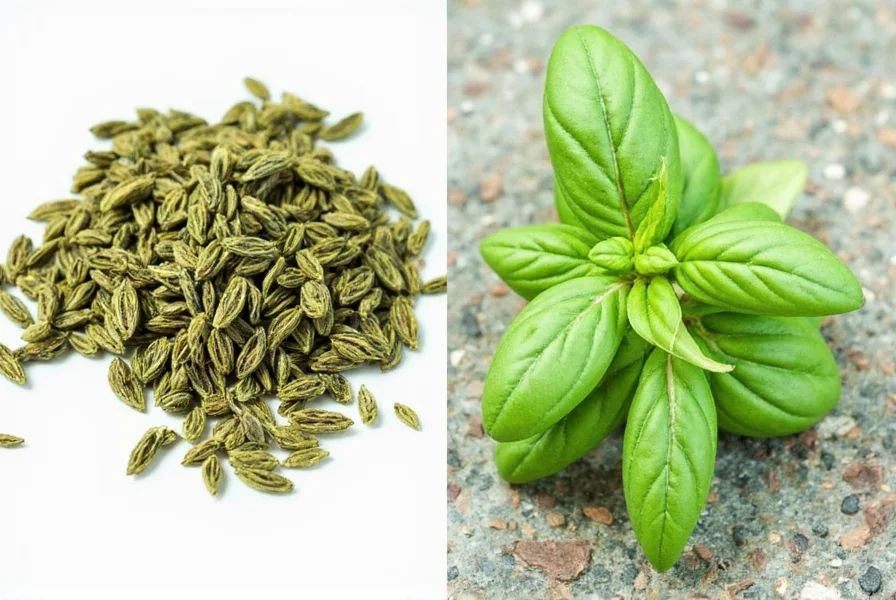
Key Ingredients of a Caprese Salad
The traditional Caprese salad consists exclusively of three core ingredients:
| Ingredient | Description |
|---|---|
| Tomatoes | Fresh, ripe, and juicy—typically heirloom or vine-ripened varieties. |
| Mozzarella | Fresh, creamy, and soft—preferably buffalo mozzarella for authenticity. |
| Basil | Fragrant and aromatic leaves, essential for the classic flavor profile. |
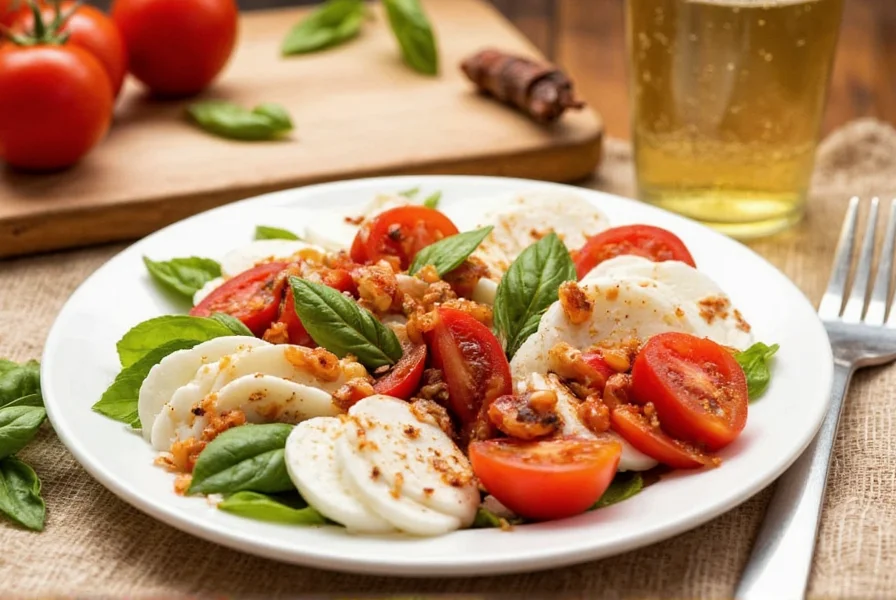
While spices like black pepper or chili flakes are sometimes added in modern variations, they are not part of the authentic recipe. The dish relies solely on the natural balance of these three ingredients.
The Flavor Profile: Spicy or Not?
Traditional Caprese salad is not spicy. It features the natural sweetness of ripe tomatoes, the creamy mildness of fresh mozzarella, and the aromatic freshness of basil. Spices are optional additions for modern interpretations, but they do not define the classic dish.
| Flavor Type | Description |
|---|---|
| Classic | Sweet, fresh, and herbaceous—no added heat. |
| Spiced Variation | Optional additions like chili flakes or garlic-infused oil for mild heat. |
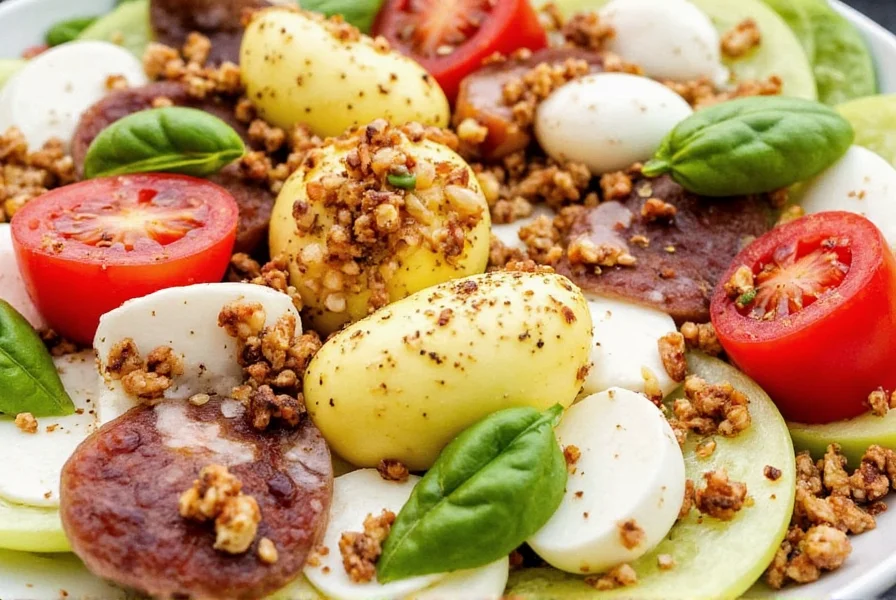
Pro Tips for Making the Perfect Caprese Salad
- Use fresh ingredients: Nothing beats the taste of a perfectly ripe tomato and fresh mozzarella.
- Layer them strategically: Arrange the tomatoes and mozzarella slices in alternating layers for a neat presentation.
- Keep it simple: Traditional recipes avoid spices; let the natural flavors shine.
- Infuse olive oil with herbs: Use basil-infused olive oil for richer flavor without heat.
- Balance with balsamic vinegar: A light drizzle can cut through the richness and brighten the dish.
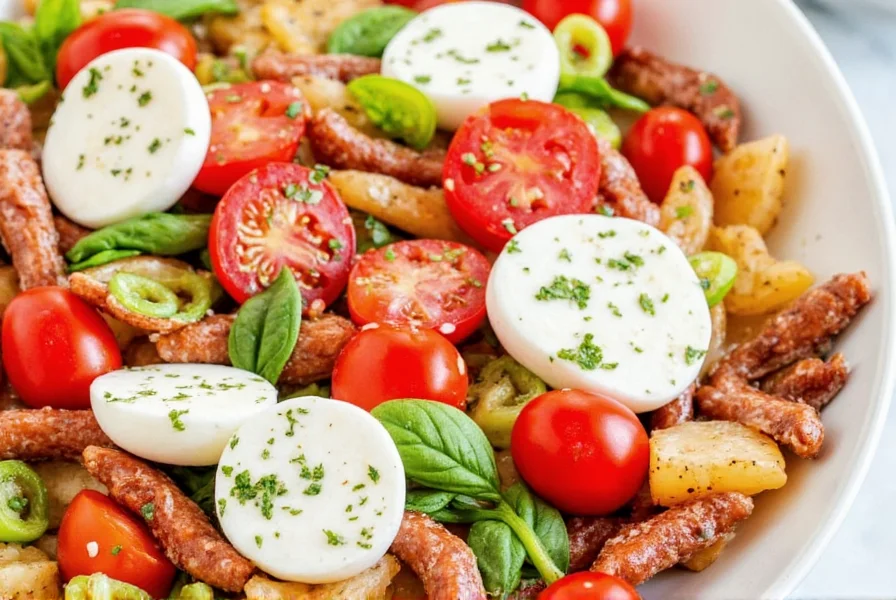
Buying Guide: Choosing the Best Ingredients
Tomatoes
Look for firm, plump, and brightly colored tomatoes. Heirloom varieties offer a range of colors and flavors, making them ideal for a visually appealing salad.
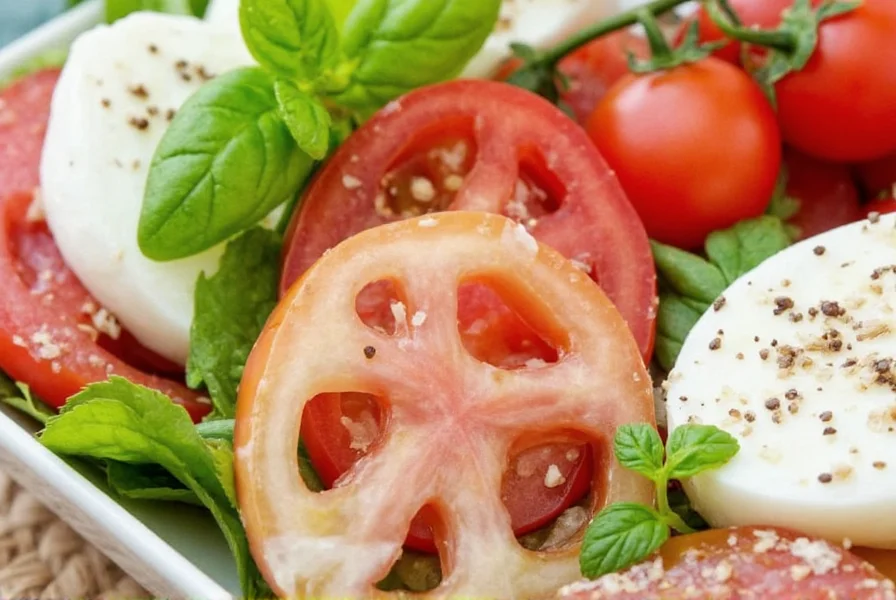
Mozzarella
Choose fresh mozzarella that's soft and moist. Avoid anything that feels dry or rubbery. Buffalo mozzarella is a popular choice for its rich flavor.
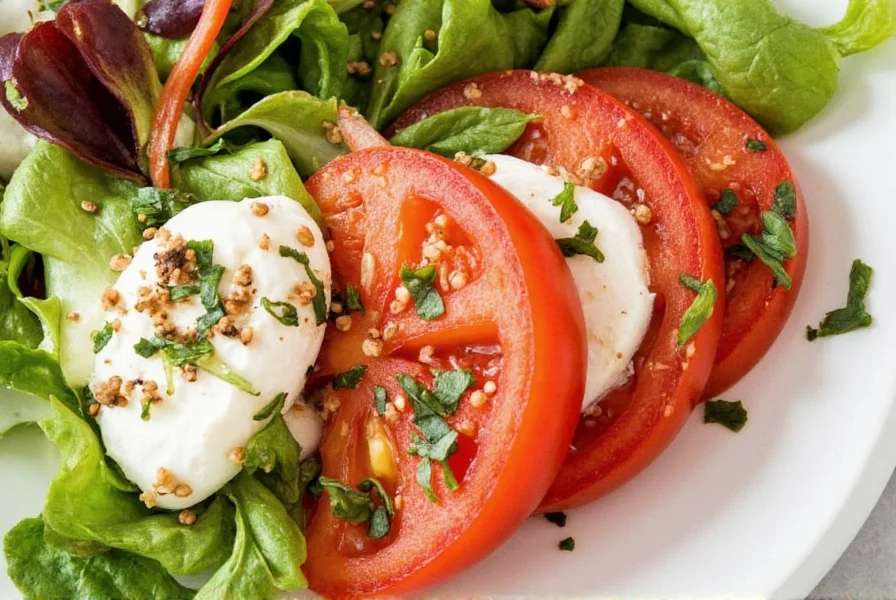
Basil
Fresh basil leaves should be vibrant green, fragrant, and free from wilting. Store them in water or wrap them in a damp paper towel to keep them fresh longer.
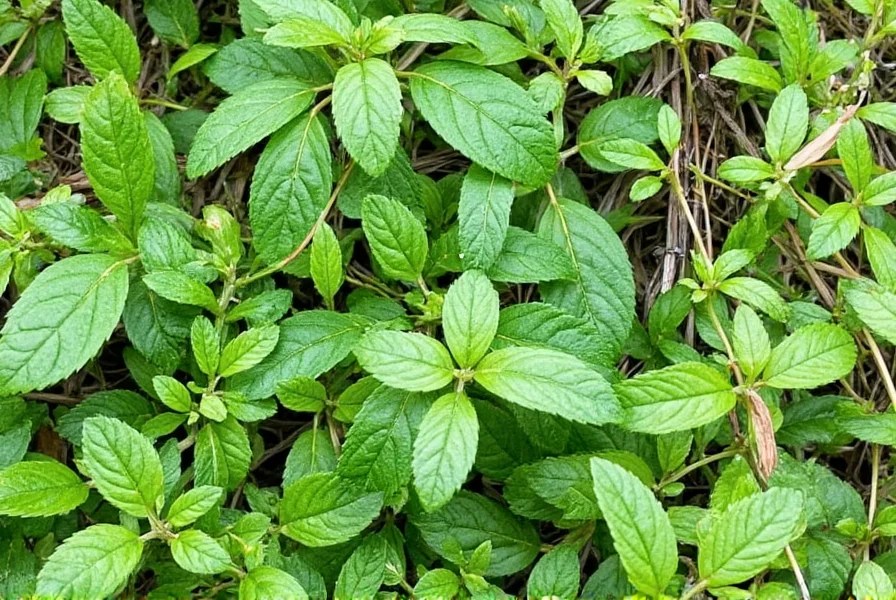
Olive Oil & Vinegar
Opt for extra virgin olive oil for a smooth and buttery texture. For vinegar, balsamic or white wine vinegar works well. Traditional recipes avoid spicy oils—use plain olive oil for authenticity.
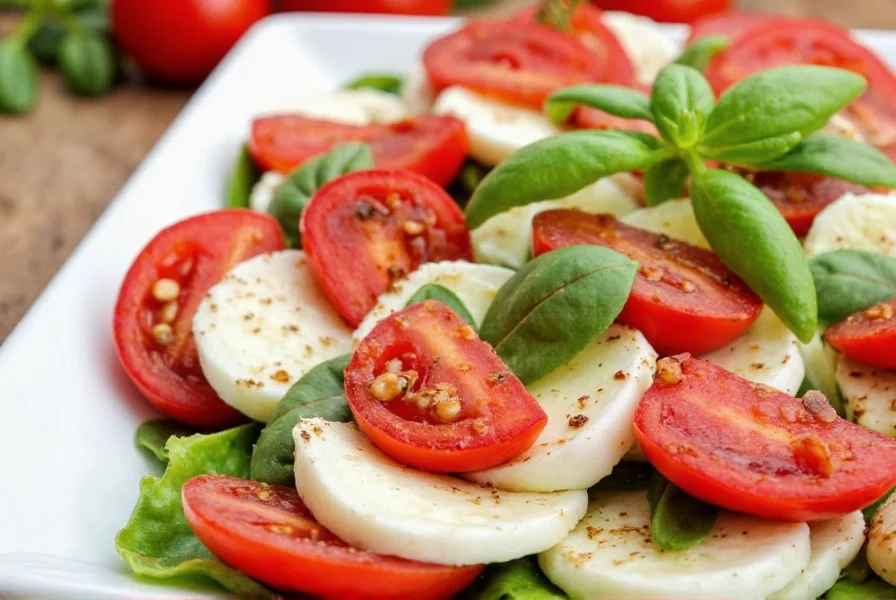
Conclusion
So, what is in caprese salad? The authentic recipe contains only three ingredients: fresh tomatoes, fresh mozzarella cheese, and fresh basil leaves. It is not spicy by nature, relying on the natural balance of these components. While modern variations may include optional spices, the traditional dish celebrates simplicity and freshness without heat.
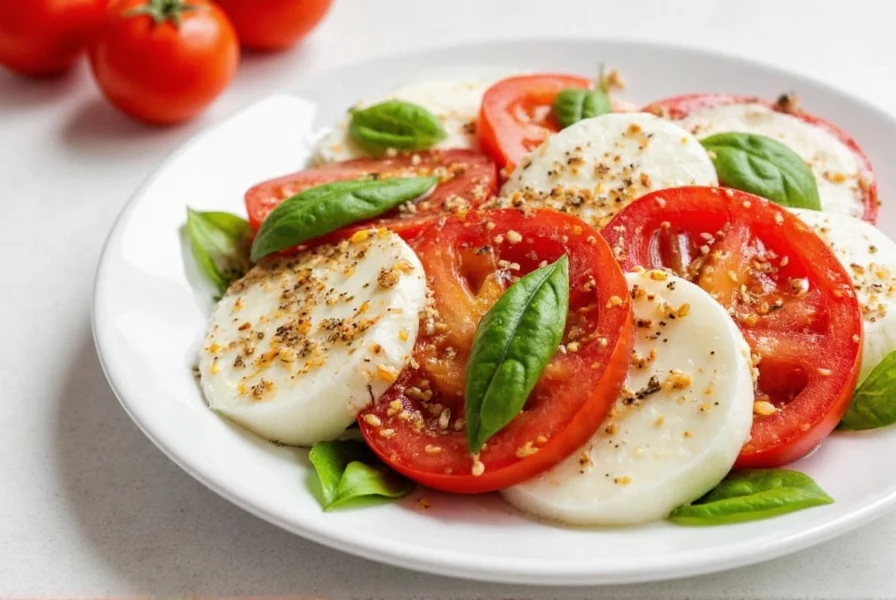
Frequently Asked Questions
What are the three main ingredients in a traditional Caprese salad?
The three essential ingredients in a traditional Caprese salad are fresh tomatoes, fresh mozzarella cheese, and fresh basil leaves. These ingredients represent the colors of the Italian flag—red, white, and green—which is why the salad is sometimes called "Insalata Tricolore."
Is a traditional Caprese salad spicy?
No, a traditional Caprese salad is not spicy. It features the natural sweetness of ripe tomatoes balanced with the creamy mildness of fresh mozzarella and the aromatic freshness of basil. Spices like chili flakes are optional additions in modern variations but are not part of the authentic recipe.
What type of tomatoes are best for Caprese salad?
Vine-ripened tomatoes, particularly heirloom varieties, work best for Caprese salad. Look for firm, plump, and brightly colored tomatoes that are fully ripe but not overripe. Beefsteak or large on-the-vine tomatoes are excellent choices as they slice well and have rich flavor.
What kind of mozzarella should I use for an authentic Caprese salad?
For an authentic Caprese salad, use fresh mozzarella (mozzarella fresca), preferably buffalo mozzarella (mozzarella di bufala) which has a richer, creamier texture and more complex flavor. The mozzarella should be soft, moist, and packed in water. Avoid low-moisture or pre-shredded mozzarella, which is better suited for melting.
Are there additional ingredients commonly added to Caprese salad?
While the traditional version contains only tomatoes, mozzarella, and basil, many variations include extra virgin olive oil, balsamic vinegar or reduction, salt, and freshly ground black pepper. Spices like chili flakes are optional but not traditional; the authentic recipe focuses on the natural flavors of the three core ingredients.
How should a Caprese salad be assembled?
A classic Caprese salad is assembled by slicing tomatoes and mozzarella into even slices, then alternating them on a platter. Fresh basil leaves are placed between or on top of the slices. The salad is then drizzled with extra virgin olive oil, seasoned with salt and pepper, and sometimes a balsamic reduction. The key is to let the natural flavors shine without overcomplicating the presentation.

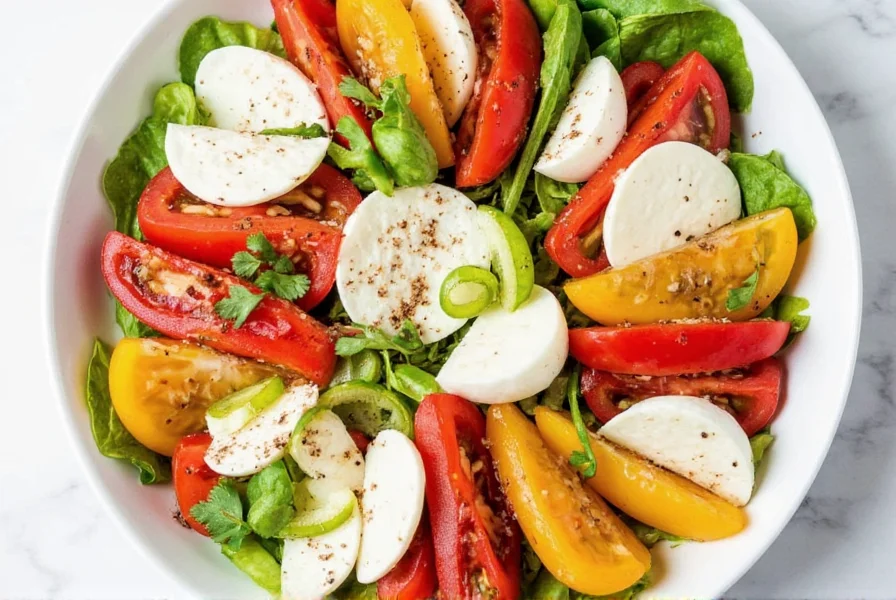









 浙公网安备
33010002000092号
浙公网安备
33010002000092号 浙B2-20120091-4
浙B2-20120091-4